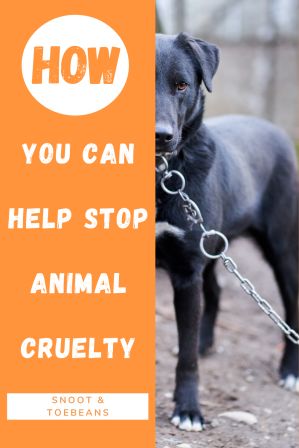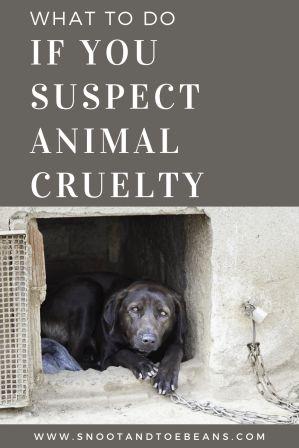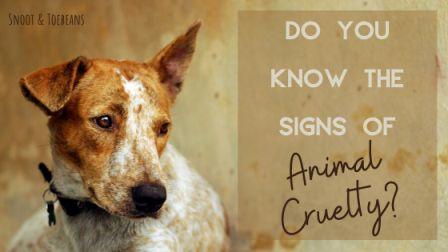Disclosure: My dog blog is supported by dog parents just like you. I only recommend products that I would use on my dogs. All opinions expressed here are my own. I sometimes earn a small affiliate commission, at no extra cost to you, when you click through the affiliate link and purchase something. You can read more about my affiliate policy here.
The dog chained to a post doesn’t have a voice to speak about what is happening. However, the human who just drove by does. To clarify, we humans can and should speak up when we witness cruelty to animals. We, the humans who love animals, are their only voice.
It is up to us to speak up and intervene if we witness animal abuse.
Dr. Robin Ganzert, president and CEO of American Humane
Although, every month of the year, we should prevent cruelty to animals, April is important to the ASPCA. April is known as the Prevention of Cruelty to Animals month.
Therefore, during April, the ASPCA puts in an extra effort to raise awareness of the cruelty to animals. In addition, they actively seek donations to the issue. The awareness and donations raised go towards informing people on how to help prevent cruelty to animals.
Compassion for animals begins at home – use this opportunity to educate your children on the importance of animals. You can’t protect what you don’t love, and you can’t love what you don’t know. Set an example and show children how to treat animals with kindness and consideration.
Dr. Robin Ganzert, president and CEO of American Humane
As a compassionate human being, it’s important to see the signs of animal cruelty. Likewise, it is important to be informed on how to help prevent it.
And, although our species is capable of great evil, we are also capable of great good. So, in order to be proactive against animal cruelty, it is important to understand the potential for both.
Cruelty to Animals – What Is It?
Most importantly, cruelty to animals is looked at through a passive lens and an active lens. Passive cruelty looks like neglect, such as starvation, but active cruelty is abuse with malicious intent.
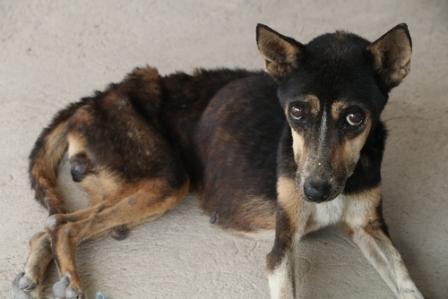
For instance, knowingly depriving an animal of food, water, shelter, socialization or veterinary care is active cruelty. In addition, so is maliciously torturing, maiming, mutilating or killing an animal.
However, humane officers mostly only investigate animal cruelty that is unintentional, such as neglect. Fortunately, unintentional abuse can be resolved through education. A lot of these cases are due to misinformation and sheer ignorance.
While not all cases of animal cruelty are reported, statistics show that the majority that are involve dogs.
According to Brandon Gaille Small Business & Marketing Advice, dogs are the most common victims of animal abuse. To clarify, dogs account for 64.5% of all documented cruelty cases that are media reported. Furthermore, there are about 6,000 documented cases of dog abuse that occur every year.
Remember my first sentence about the dog chained to a post? Even if it isn’t illegal in your area, a dog continually chained is also a neglected victim. Being confined causes a dog to feel helpless and are more likely to become a victim of starvation.
Dogs have an innate need to be social, therefore being chained causes them suffering and heartache. The agony can drive them to aggression, neuroses and self-mutilation behaviors.
Nonprofit organizations continually work at bringing more awareness to animal cruelty. The American Humane, The Humane Society of the U.S., and the ASPCA helps people understand the problem. Furthermore, they help people understand what they can do to help prevent cruelty to animals.
Animal Cruelty Awareness is Key
Awareness is important because dogs are not the only animals suffering from cruelty. Cats, horses and livestock get a fair share of the reported animal abuse and neglect cases.
In addition, animal cruelty doesn’t involve just individual animals, such as pets. There are organized incidents, like dog fighting, that put animals in cruelty situations.
It is important for the public to know what animal cruelty can look like, even if it isn’t intentional.
Common signs to look for:
- No shelter (while outdoors, animals need protection from the elements)
- A tight collar (if a collar is not adjusted as a pet grows, it can cause injury, strangulation, and death)
- Lack of grooming (massive matting and sores occur without regular grooming)
- Mange (tiny parasites cause a dog to itch, and lose hair and have sores from scratching and biting to relieve the irritation)
- Starvation (dogs can starve from lack of food, improper food, untreated disease, or parasites, such as worms)
- Tick or flea infestations (when left untreated, an animal can die)
- Injuries (an animal is in constant pain if he or she has untreated wounds or obvious signs of injury)
- Aggression (if an animal cowers in fear or acts aggressively when their owner approaches, they are not in a safe environment)
- Physical violence (an owner striking or physically harming an animal)
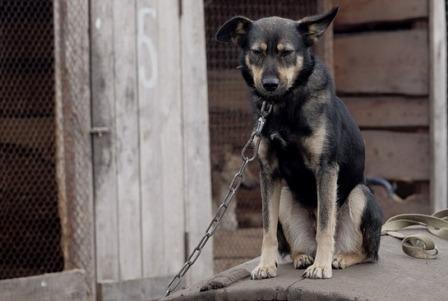
- Repeatedly chained (with this, they are usually left alone without food or water)
- Trapped inside a vehicle (the owner has left them on a hot day)
- Outside in extreme weather (domesticated animals left outside in extreme cold or hot conditions)
- Hoarding (numerous pets or animals are hoarded in poor conditions)
- Dog fighting (animals are trained for organized fighting)
- Abandonment (many animals that are pets are left in the country or the side of a road and sometimes left in a yard when an owner moves)
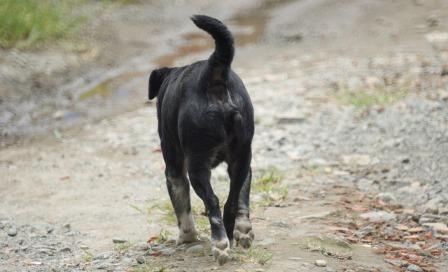
Once you are aware of what to look for, you may find signs of cruelty in many places. However, there are numerous ways you can help animals in these cruel situations.
How to Prevent Cruelty to Animals
Firstly, American Humane encourages people to keep a watchful eye out for animals in cruel situations. Secondly, they encourage people to be willing to make a report to local animal control. However, if a local animal control does not exist, then report it to law enforcement.
Local animal controls and law enforcement rely on concerned citizens to help them be aware of animal cruelty. In addition, you are able to remain anonymous when filing a report.
While there are many things that can be done to help animals, the most important part is to never pass by an animal in need. If you see an animal [who is] injured or in distress, contact your local animal control, local animal shelters or law enforcement for assistance.
Audrey Harvey, campaigns manager for Last Chance for Animals (LCA)
Harvey also suggests another great way to help animals is to volunteer in local animal shelters. Or, you can donate used:
- dog/cat beds
- toys
- food and water bowls
- food
- blankets
According to Harvey, shelters in need can use these things if they are clean and gently used. Furthermore, you can make money donations to the different organizations fighting against cruelty to animals.
Many neglect cases, reported each year, are simply the owner’s lack of resources and/or knowledge. Fortunately, this is usually an easy fix. You, or someone you’ve reported the situation to, can help educate the owner about the problem.
In addition, the owner can be worked with to help them adjust their pet’s living conditions. Perhaps they keep their dog chained, so you can check in your area about fence-building projects
Additional Ways to Prevent Animal Cruelty
- Use social media to spread awareness (you can post about efforts being made to assist animals at risk of cruelty or those already in need)
- Encourage family and friends to adopt from local shelters (you may know someone looking for a new furry companion, so you can suggest they adopt instead of purchasing)
- Consider adopting or fostering an abused or neglected animal (you will be surprised at how grateful these animals are and the connection is special)
- Speak to local veterinarians (many will offer medical, dental, surgical and other pet care services for animals in need)
In Conclusion
The ASPCA understands that creating awareness about cruelty to animals can only do so much. Therefore, the ASPCA and their supporters will continue to push for more people to fight against animal cruelty.
Learn more about animal cruelty so you can give voice to the abused animals since they can’t speak. Snoot and Toebeans challenges you to speak up if you suspect an animal is in danger.
I, Jeana, founder of Snoot and Toebeans, am donating my birthday this year to my local humane society. By the way, my birthday is April 30th. You can see my birthday campaign here.
You, too, can create a personal Facebook fundraising page for a local nonprofit organization like I did. In addition, you can share it with your family and friends. Let them know, in lieu of gifts, you would like them to donate to your organization. You can also donate your birthday for the ASPCA.
Are you making a difference for cruelty to animals? We would love for you to tell us about it in the comments below.
Prevention of Cruelty to Animals isn’t the only awareness brought to light in April. We also covered a couple of other important dog awarenesses this month. Check them out:
You can save this post to Pinterest, by using one of the following images to pin.
